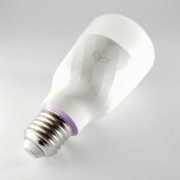How much do led lights save?
LED Bulbs: How Much Can You Save?
 We’re well aware of the benefits that LED bulbs come packed with. Not only do they have long lifespans, but they also produce unrivalled levels of brightness and embrace energy efficiency. The beauty of all these benefits is that they combine to deliver a lighting solution which is high performance and cost effective.
We’re well aware of the benefits that LED bulbs come packed with. Not only do they have long lifespans, but they also produce unrivalled levels of brightness and embrace energy efficiency. The beauty of all these benefits is that they combine to deliver a lighting solution which is high performance and cost effective.
But how do LED Bulb costs compare to those of traditional lighting methods?
How Efficient are LED Lights?
The traditional method of lighting for homes has always centred around incandescent light bulbs. But advancements in technology have led to the emergence of LED bulbs as the new kings of lighting. Many people initially shied away from upgrading to LED bulbs. Change is always a difficult concept to get to grips with and many consumers have stuck to what they know. Especially when they see the price of LED bulbs. But that initial price tag can be misleading.
Do LED lights really save you money?
There’s no escaping the fact that LED bulbs cost more than traditional lighting methods. An 8W LED bulb, for example, costs around £3.50. Its incandescent equivalent – which would be rated at 60W – will cost just £1.50. That’s an 80% price difference. And that would appear to be significant. But it’s not as clear cut as the initial expense being the deciding factor.
LED bulbs, you see, have a wide range of benefits. And these benefits far outweigh those offered by traditional incandescent bulbs. Let’s take a closer look at how these benefits can lead to long term savings:
- Lifespan: An LED bulb should be expected to last for 50,000 hours. This gives you value for money in the long term when you consider that an incandescent bulb will only last for 1,000 hours. Therefore, one LED bulb will last as long as 50 incandescent bulbs. Using our 8W/60W comparison, that equates to a saving of £71.50 over the course of the LED bulb’s life.
- Energy Costs: One of the main areas where LED bulbs thrive is their energy efficiency. An LED bulb will always use a smaller wattage compared to an incandescent bulb. And this means that less energy is required to power the LED bulb. Less energy equals less cost. If we assume an energy rate of £0.18 kWh, then an 8W LED bulb – used for 4.5 hours a day – will cost £2.37 over a year’s usage compared to £11.83 for a 40W incandescent bulb.
- Office LED Lighting: an ideal choice for businesses looking to reduce energy costs and improve their environmental impact and offers a number of benefits over traditional light sources.
Read about Office LED lighting solutions
Is it worth switching to LED lighting? 
An LED bulb is going to be the more expensive option when it comes to the initial purchase. But it turns out that LED lights are playing the long game in terms of price. With a lifespan that far outstrips that of an incandescent bulb, an Low energy bulb is a purchase which will outlast dozens of incandescent bulbs. And the low energy costs generated by LED guarantees you savings on your annual energy bill. Clearly, upgrading to LED is the way forwards in terms of lighting your home.
Learn more about how you can save money on your Industrial and Warehouse Power and Lighting





